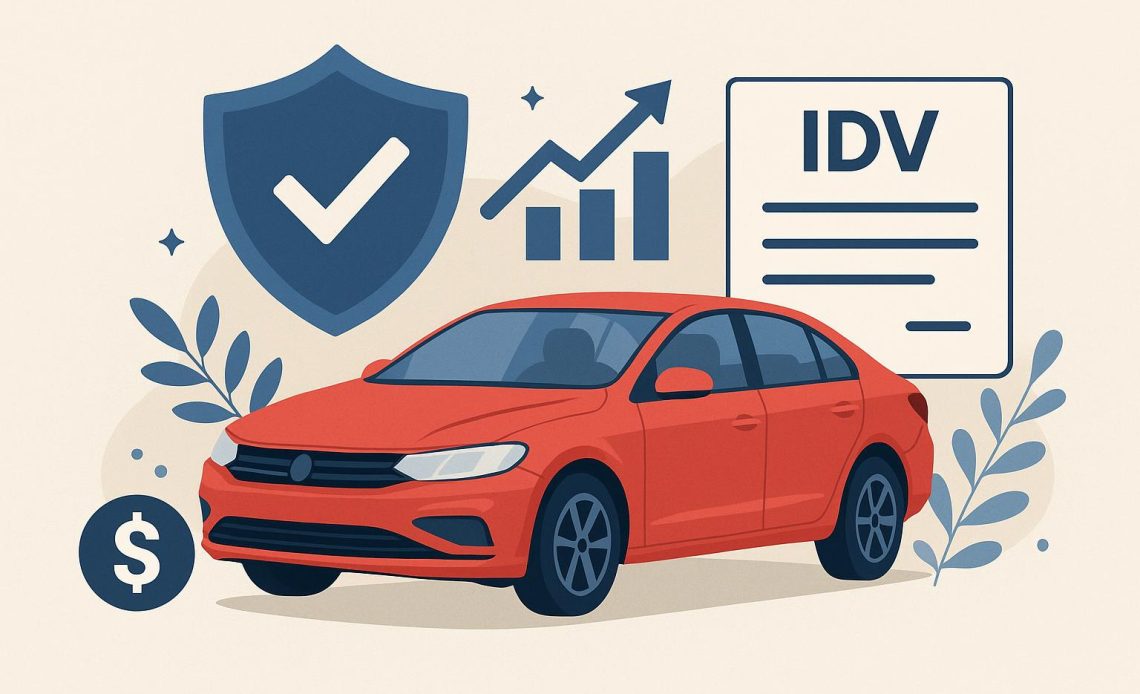
When buying or renewing your car insurance, one of the most important factors to understand is the Insured Declared Value or IDV. It represents your car’s current market value and directly affects both your premium and the amount you can claim in case of theft or total loss.
Selecting the right IDV in car insurance ensures you are neither misinsured nor overpaying, helping you strike the perfect balance between cost and protection.
Understanding IDV in Car Insurance
The Insured Declared Value or IDV is defined as the maximum amount your insurance company will pay if your car is completely damaged beyond repair or stolen. It is calculated based on the car manufacturer’s selling price minus depreciation for each year of use.
Depreciation plays a key role. The older your vehicle, the lower its IDV. For example, a brand new car will have an IDV close to its showroom price, while a five-year-old car will have a significantly reduced value. During car insurance renewal, reviewing your IDV ensures that it reflects the accurate market worth of your car.
Why Maintaining a High IDV Matters?
A higher IDV may slightly increase your premium, but it provides much better financial security. Here’s why it matters:
Ensures Better Compensation in Case of Total Loss/Theft
If your car is stolen or damaged beyond repair, a higher IDV ensures you get adequate compensation close to the real value.
Offers Higher Resale and Loan Eligibility
Cars with well-maintained IDV tend to have higher resale value, and lenders view them more favourably when offering loans.
Reduces Financial Burden Post-Accident
A low IDV can leave you covering a large portion of repair or replacement costs yourself. Maintaining a fair IDV ensures your insurance covers most of the vehicle’s value.
Example Showing Claim Difference with High vs Low IDV
Suppose your car’s market value is ₹10 lakh.
- If you set the IDV at ₹8 lakh, your premium is lower, but your maximum claim payout is also capped at that amount.
- Setting the IDV closer to ₹10 lakh slightly increases the premium but gives you full coverage in case of total loss.
In short, opting for a reasonable yet sufficiently high IDV offers better long-term protection and saves you from unexpected expenses.
How to Balance IDV and Premium?
While a higher IDV boosts your protection, setting it unrealistically high can lead to inflated premiums. Here is how to find the right balance:
Avoid Undervaluing IDV: Don’t reduce your IDV just to lower the premium. It can leave you financially vulnerable during a claim.
Review IDV Annually: With every car insurance renewal, adjust your IDV to match your car’s current market value.
Compare Options During Renewal: Use online insurance tools to compare IDV values across insurers and choose the most accurate estimate.
Tips to Maintain a Fair IDV
- Keep your car in good condition with regular servicing and maintenance.
- Use authorised valuation tools or your insurer’s online calculator to find the correct IDV.
- Review the depreciation rate every year to ensure fair coverage.
Conclusion
Maintaining a high yet realistic IDV car insurance value is one of the smartest ways to protect your car’s worth and ensure maximum claim benefits. It helps you stay financially secure without overpaying for coverage.
With trusted insurers like TATA AIG, you can easily customise your car’s IDV during policy purchase or renewal, ensuring you find the perfect balance between premium and protection.


